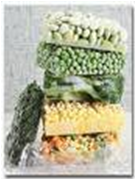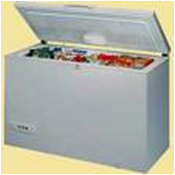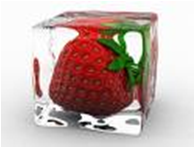Freezer Storage Guidelines Food Preservation

Freezer Storage Guidelines: What's in your freezer?
Keeping frozen foods on hand is a great time saver. You can cook ahead and freeze your favorite meal. These meals-in-a-minute will come in handy when you can't cook or don't feel like cooking but don't want to eat out. If unexpected company shows up, you're prepared!

Freezer Storage Guidelines
General Freezer Tips
To protect flavor, color, moisture and nutritional value, frozen foods must have proper packaging:
- Be moisture and vapor resistant
- Be durable and leak-proof
- Not become brittle and crack at low temperature
- Be resistant to oil, grease or water
- Protect foods from absorption of off-flavors or odors
- Be easy to seal and easy to mark

Freezer Quick Tips
- Freeze food at 0 °F or lower
- Freeze foods as soon as they are packaged and sealed
- Don't overload your freezer
- Add only the amount that will freeze within 24 hours (2-3 lbs. per cubic foot)
- Place packages in contact with the coldest part of the freezer
- Leave a little space between packages so air can circulate
- When frozen, store the packages close together
- A full freezer is more efficient
- Keep an up-to-date inventory (near the freezer) of the foods therein
- List foods on the inventory by date and item
- Label foods with a permanent marker with date, item and expiration date (see chart below)
- Keep a freezer thermometer and check temperature frequently (above 0 °F quality declines quickly)
- Season lightly before freezing. Seasoning can loose flavor or become bitter. You can spice it up when re-heating.

Don't Freeze Me Please!
These foods typically don't freeze well:
- Vegetables: Cabbage*, cucumbers*, celery *, salad greens, tomatoes, parsley, radishes
- Dairy & Cheese: Cheese, crumb toppings, cream or custard fillings, milk sauces, sour cream
- Cooked egg whites, icings made from egg whites (rubbery texture)
- All fried foods
- Jell-O, gelatin-based products
- Potatoes (fried, baked or boiled)
- Cooked macaroni, spaghetti or rice
- Stews keep better than fried or boiled meats
- Mayonnaise doesn't keep well as salad dressing
- Cream-style corn retains flavor better than whole kernel corn or corn on the cob
*Note: Cucumbers and cabbage can be frozen if marinated.
[Note: Information obtained from Texas Agricultural Extension Service, The Texas A&M University System]
I hope you found these freezer storage guidelines helpful.
You might also want to check out the FDA Freezer Storage Guidelines.
Additional Helpful Information
You might also want to check out the information on these pages:
- Freezer Storage Chart
- Freezer Storage Guidelines
- Dairy Storage Guidelines
- Meat/Fish/Poultry Storage Guidelines
- Kitchen Safety Tips
- Pantry Storage Guidelines
- Picking Produce
- Produce Storage Guidelines
- Refrigerator Storage Guidelines
Click the lavender bar on the left and subscribe to the RSS feed to be notified of new listings as they become available.
Did you like this? Please share it! Thanks in advance.
No matter where you are in life (stay-at-home mom, full or part time employee, retired, etc.) you can make a good income with a website. Whether you write books, make crafts or something else, I highly recommend SBI. It's the reason for this website. Check it out below and become another solopreneur!
Hello! This is Shelly Morton, the author of this website. I know you hear a lot of hype about making money from home and building a successful website. I speak from experience as a solopreneur, I have succeeded with Solo Build It! There is simply no better way to build an online business. Nothing else compares. It's not a "get rich quick" scheme. SBI provides you with all the tools and tips you need to be successful. You put in the work and SBI will help you succeed! SBI is simply the BEST way to get started for any "solopreneur."




